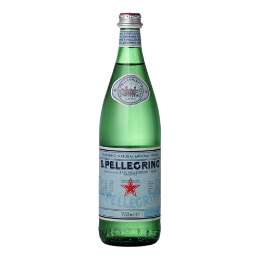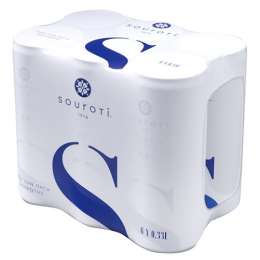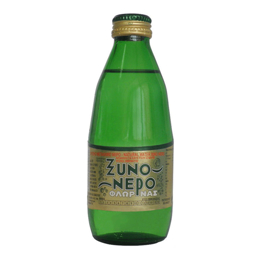Sparkling Water
Carbonated water is directly taken from a natural source or is artificially prepared. Choose your favorite!
Pellegrino 750ml
Perrier 330ml
Souroti Can 330ml Six Pack
Souroti One Way 250ml
Souroti One Way 750ml
Xino Nero Florinas 250ml
Xino Nero Florinas 750ml
Frequently Asked Questions
01 What are the main characteristics of sparkling water?
The sub-acid taste dimension and the pleasant "numbness" of the palate are the two main characteristics of carbonated water. Extremely refreshing and digestive, sparkling water is an ideal choice for quenching thirst or accompanying a meal.
02 What is the difference between natural and artificial carbonated water?
In artificial carbonated water, CO2 is added industrially, under pressure. Natural carbonated water is enriched with carbonate salts (calcium/magnesium carbonate) and bicarbonate salts (sodium/potassium bicarbonate) inside the earth, as it passes through certain types of rock. In the first one, carbonate bubbles are released (abruptly) by opening the package, due to loss of pressure. In the second one, the reaction of salts with water results in carbon dioxide formation, which is released (gradually) as bubbles.
03What is the proper storage of sparkling water, to preserve its carbonate?
In general, the solubility of a gas, eg. carbon dioxide, in water is proportional to pressure and inversely proportional to temperature. Therefore, keep sparkling water in the refrigerator (to reduce temperature), with a tightly closed cap (to increase pressure). Small packages, e.g. of 250 mL or 330 mL, should be consumed at once.
04 Are there different levels of carbonation in different sparkling waters?
In artificial carbonated water, the extent of carbonation is up to each manufacturer. In natural carbonated water, the amount of carbonate is up to nature. The geological profile of the water source determines the quantity of salts, and therefore bubbles, that it contains.
05Which cocktails are ideal for combining with sparkling water?
It is not uncommon to add sparkling water, instead of tonic, to the famous gin combination. An Americano also contains carbonated water, along with Campari and sweet vermouth. Finally, Aperol gets a double boost of bubbles, when sparkling water allies with Prosecco, to create a Spritz.
06 What is the correct proportion of carbonated water to lighten a cocktail, without altering its taste?
Experimentation is the best way to answer the question. More carbonated water in a cocktail will enhance its bubbles but dilute the result. There is no rule of balance. Everyone discovers their preference through testing.










